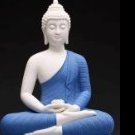[Myanmar] Memories Of Wwii Run Deep For Kio
-
Recently Browsing 0 members
- No registered users viewing this page.
-
Topics
-
-
Popular Contributors
-
-
Latest posts...
-
0
Tourism Pattaya Model: High-Tech Initiative Reduces Crime and Boosts Tourism Confidence
Picture courtesy of Siam Rath In an innovative attempt to enhance tourist safety, the Pattaya Model has been introduced by Police Region 2, significantly cutting crime rates and boosting confidence among visitors and locals. This forward-thinking initiative, spearheaded by Commander Lt. Gen. Yingyot Thepjamnong, integrates cutting-edge technology to transform Pattaya into a secure and welcoming destination. Integrating Technology for Safety Launched as a proactive safety measure, the Pattaya Model employs advanced technologies such as artificial intelligence and big data. This integration aids in forecasting potential criminal activities and devising strategic responses before issues arise. As a result, crime rates have seen a substantial drop since the initiative’s sandbox trial began in April. KIntelligent surveillance systems have equipped popular tourist hotspots like Pattaya Beach and Walking Street. These areas utilise real-time face recognition and smart notification solutions to facilitate rapid police response and more efficient apprehension of suspects. Government Endorsement and Community Collaboration The initiative has drawn praise from the Tourism Minister, Sorawong Thienthong, who highlighted its vital role in reviving tourist confidence. Mr. Thienthong acknowledged that such measures are pivotal in reassuring tourists, potentially encouraging more visitors to Pattaya and other destinations across Thailand. Central to the Pattaya Model is the collaboration among community members. The police are collaborating closely with local authorities, businesses, and residents to establish a comprehensive safety network. This collective effort aligns various sectors in their goal of maintaining a safe environment. Five Pillars of the Pattaya Model The Pattaya Model is built on five core pillars: Crime Prevention by Design: Establish preventive infrastructure using advanced technology to stop crimes before they occur. AI-Driven Policing: Harness AI and big data to inform every aspect of police operations, enhancing accuracy and response times. Smart Collaboration: Foster partnerships among police, local communities, and private sectors to build a cohesive safety network. Tourist-Friendly Tech: Develop apps and QR codes that allow tourists to easily request assistance and report incidents. Rapid Response: Ensure seamless connectivity between police, emergency services, and healthcare providers for swift action during emergencies. Tangible Results and Future Prospects The results are promising: since implementation, incidents of crime have sharply decreased. For instance, physical assault cases dropped from 111 in April to just 50 by June. Similarly, property-related crimes fell from 81 to 48 within the same timeframe, demonstrating the model’s effectiveness in enhancing police precision. Looking ahead, the Pattaya Model aims to become a benchmark for other cities in Thailand. With continued investment in technology and strong community engagement, the authorities are optimistic that Pattaya will set new standards for tourist safety, revitalising its appeal as a global travel destination. In summary, the Pattaya Model is not just a police initiative but a community-wide endeavour aimed at transforming Pattaya into a model of safety and reliability. Authorities urge residents and visitors to trust in their commitment to making Pattaya a safer place for everyone. Adapted by ASEAN Now from Siam Rath 2025-07-21 -
52
UK Chaos at Bell Hotel: Migrant Crisis Sparks Violent Protests in Epping
You will have to use your imagination as they are all fighting / raping aged males in that hotel. Imagine being a parent of a child living around the corner from that and finding out one of the rapey illegals has been sexually assaulting young girls. -
13
Report Ellen DeGeneres Ditches the US for UK Bliss Amid Trump’s Reign
Who cares about an ex American TV host. -
7
Travel Suvarnabhumi Airport to Introduce Prototype Indoor Smoking Rooms by End of July
I've seen smoking rooms at airports before. If the smokers don't already have lung cancer, by the time they leave the room they will. -
6,817
-
5
Ex-Trump Supporter Rages at ‘Fat’ POTUS Over Epstein Drama
Ask yourself. Is what he’s saying being heard and believed by Trump supporters, not foreign and domestic? The point being one of perception, if Fuentes is changing people’s perception of Trump then he is having an impact,
-
-
Popular in The Pub





.thumb.jpeg.d2d19a66404642fd9ff62d6262fd153e.jpeg)




.thumb.jpg.08bafad71ee81092af511d2d7aaaf53b.jpg)



Recommended Posts
Create an account or sign in to comment
You need to be a member in order to leave a comment
Create an account
Sign up for a new account in our community. It's easy!
Register a new accountSign in
Already have an account? Sign in here.
Sign In Now